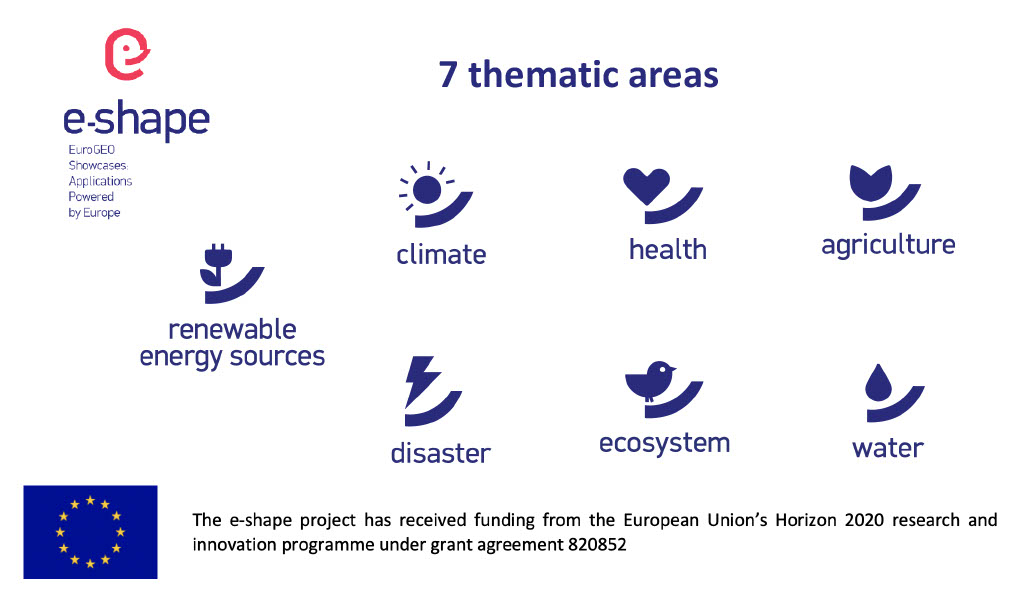
Pioneering H2020 project e-shape, strengthens the benefits for Europe of GEO - establishing ‘EuroGEO’
EuroGEO, as Europe’s contribution to the Global Earth Observation System of Systems, aims at bringing together Earth Observation resources in Europe. It allows Europe to position itself as global force in Earth observation through leveraging Copernicus, making use of existing European capacities and improving user uptake of the data from GEO assets.
Explore e-shape success stories
Success story
Urban resilience to extreme weather - climate service

Profile
The three e-shape pilots provide sub-seasonal and seasonal forecasts, as well as climate projections for European cities in Finland, Germany and Austria. The developed processing chains can be the starting point for further applications for smart cities. The e-shape pilots will increase the preparedness and response to hazardous weather conditions (e.g. snow accumulation, heavy precipitation, heat waves and dry spells) and climate hazards. They support the progress in achieving the United Nations Sustainable Development Goal 11 (sustainable cities and communities).

Proposal
Sub-seasonal and seasonal forecasts for urban areas help the cities authorities preparing for hazardous summer and winter weather conditions (e.g. disaster risk reduction management against “urban” heat). The pilot on winter snow accumulation in Helsinki is a good example of how the sub-seasonal and seasonal forecast inclusion help city authorities planning their requirements of street network maintenance during winter. The urban climate projections provide the climatological scientific basis for mid-term and long-term human settlements planning and management especially against heat in disaster-prone areas.

Benefits
- Beneficial and user-friendly sub-seasonal and seasonal climate forecasts, as well as climate projection products and indicators for city authorities
- Increased preparedness of city authorities and decrease the vulnerability of urban population to hazardous weather events and risks caused by climate variability and climate change
- Increased awareness among stakeholders in European cities interested to adapt to the consequences of climate variability and climate change and include the services as part of their decision chains
- Support of climate adaptation on the local scale; strengthening resilience and adaptive capacity

Meet the entities involved in e-shape


